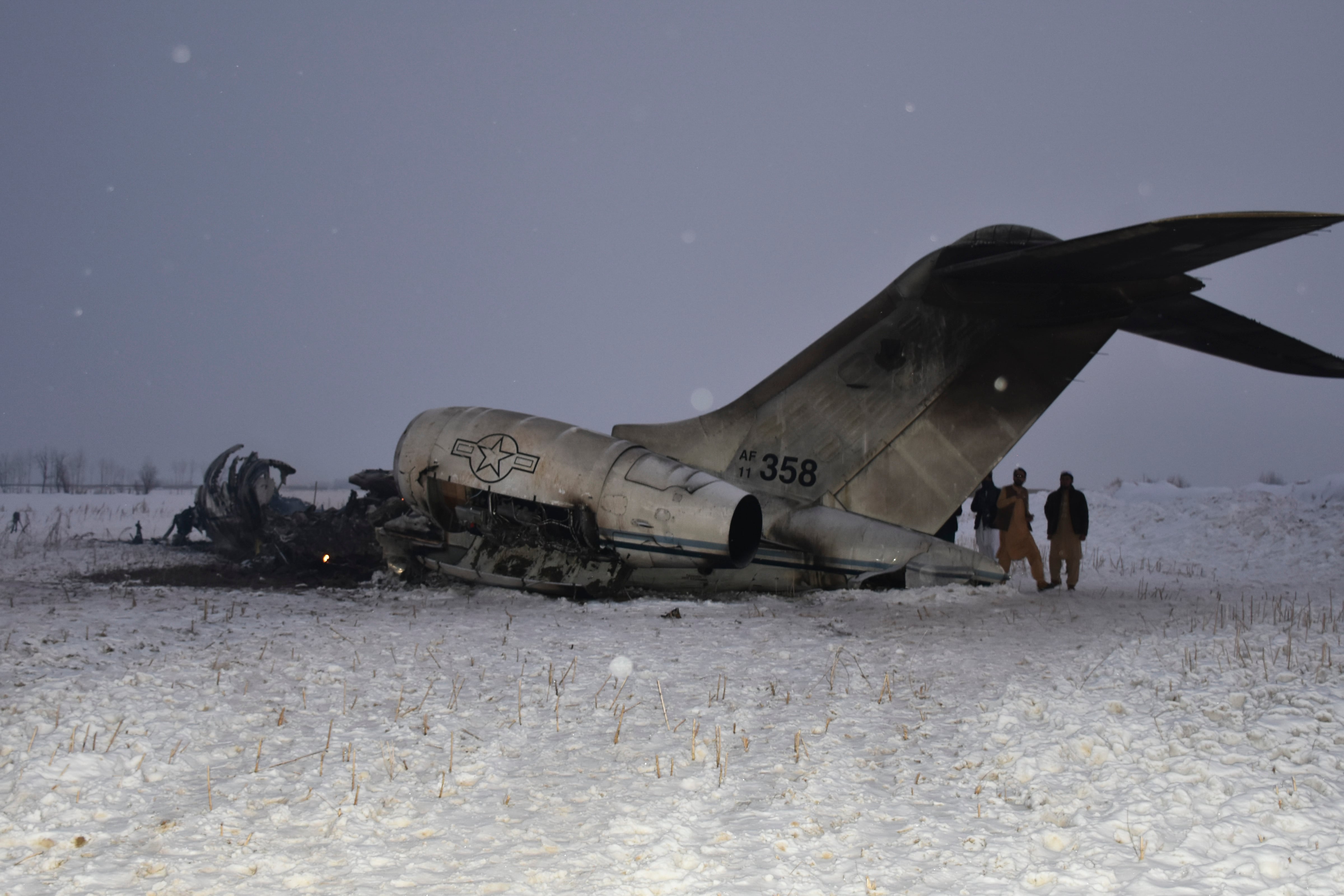The Pentagon has identified the two airmen who were killed in Monday’s Bombardier E-11A crash in Ghazni province, Afghanistan as Lt. Col. Paul K. Voss and Capt. Ryan S. Phaneuf.
Voss, 46, of Yigo, Guam, was assigned to Air Combat Command headquarters at Joint Base Langley-Eustis in Virginia, the Defense Department said in a release Wednesday. And Phaneuf, 30, of Hudson, New Hampshire, was assigned to the 37th Bomb Squadron at Ellsworth Air Force Base in South Dakota.
Voss, whose call sign was Tabs, was an 11M mobility pilot who was commissioned in November 2001 after graduating from Officer Training School, according to information released by the Air Force Personnel Center. His decorations included the Meritorious Service Medal, the Aerial Achievement Medal, the Air Medal, the Air Force Commendation Medal, and the Air Force Achievement Medal.
Phaneuf was an 11B bomber pilot who flew the B-1B Lancer. He entered active duty in June 2012 after being commissioned through ROTC. His decorations included the Air Force Commendation Medal.
In a statement, ACC said Voss was on a voluntary deployment to Afghanistan, supporting the 455th Air Expeditionary Wing at Bagram, when he died. He was piloting the E-11A.
"It’s really hard to describe how sad we are at the loss of two great airmen,” ACC commander Gen. Mike Holmes said in the statement. “Lt. Col. Paul Voss was our brother and teammate. The men and women of our Air Force knowingly put themselves in harm’s way, and I’m thankful for great Americans like them. Our thoughts and prayers are with their family members and our fellow airmen during this difficult time.”
ACC said that Voss was a prior-enlisted airman who served 25 years total on active duty. He had been stationed at Langley-Eustis for 4 years and was serving as chief of exercises within ACC’s directorate of operations.
Jimmy Santos, who deployed with Voss to Bagram in 2010, said in a Facebook post Wednesday that Voss was “down to earth, full of knowledge, and a phenomenal mentor” whose sense of humor and leadership carried him during that deployment. At the time of his deployment, Santos was a senior airman serving as a tactical systems operator for the MC-12 program.
“Paul Voss was one of those rare mission commanders that enlisted service members would love to fly with,” said Santos, who is now a policy analyst working for the city of Boston. “When things would get bad, he wouldn’t sugarcoat it. He would be one of the few officers the enlisted could look to helping us boost our morale and regain focus on the mission. He was there for us. He got us through the anger, the depression, the confusion. Simply put, he got it.”
The cause of the crash remains under investigation, U.S. Forces-Afghanistan said in a Tuesday release, but the military said it was not believed to have been shot down.
RELATED

The crew’s remains were found near the site of the crash, U.S. Forces-Afghanistan said on Tuesday, and were treated with “dignity and respect” by local Afghans.
The suspected flight data recorder from the aircraft was also recovered, the military said, and the remains of the aircraft were destroyed.
The E-11A communications aircraft was one of only four in the Air Force’s fleet. They are assigned to the 430th Expeditionary Electronic Combat Squadron, and operate out of Kandahar Airfield.
E-11As carry the Battlefield Airborne Communications Node, a communications relay also hosted on the EQ-4B Global Hawk. The node has been compared to “WiFi in the sky,” and is used as a bridge or translator for different assets in the air, on the ground or on the surface that usually can’t communicate with each other because they’re using different waveforms or can only communicate within line of sight. This is often a challenge in Afghanistan, where mountainous terrain and a lack of existing infrastructure creates communications challenges.
Stephen Losey is the air warfare reporter for Defense News. He previously covered leadership and personnel issues at Air Force Times, and the Pentagon, special operations and air warfare at Military.com. He has traveled to the Middle East to cover U.S. Air Force operations.





